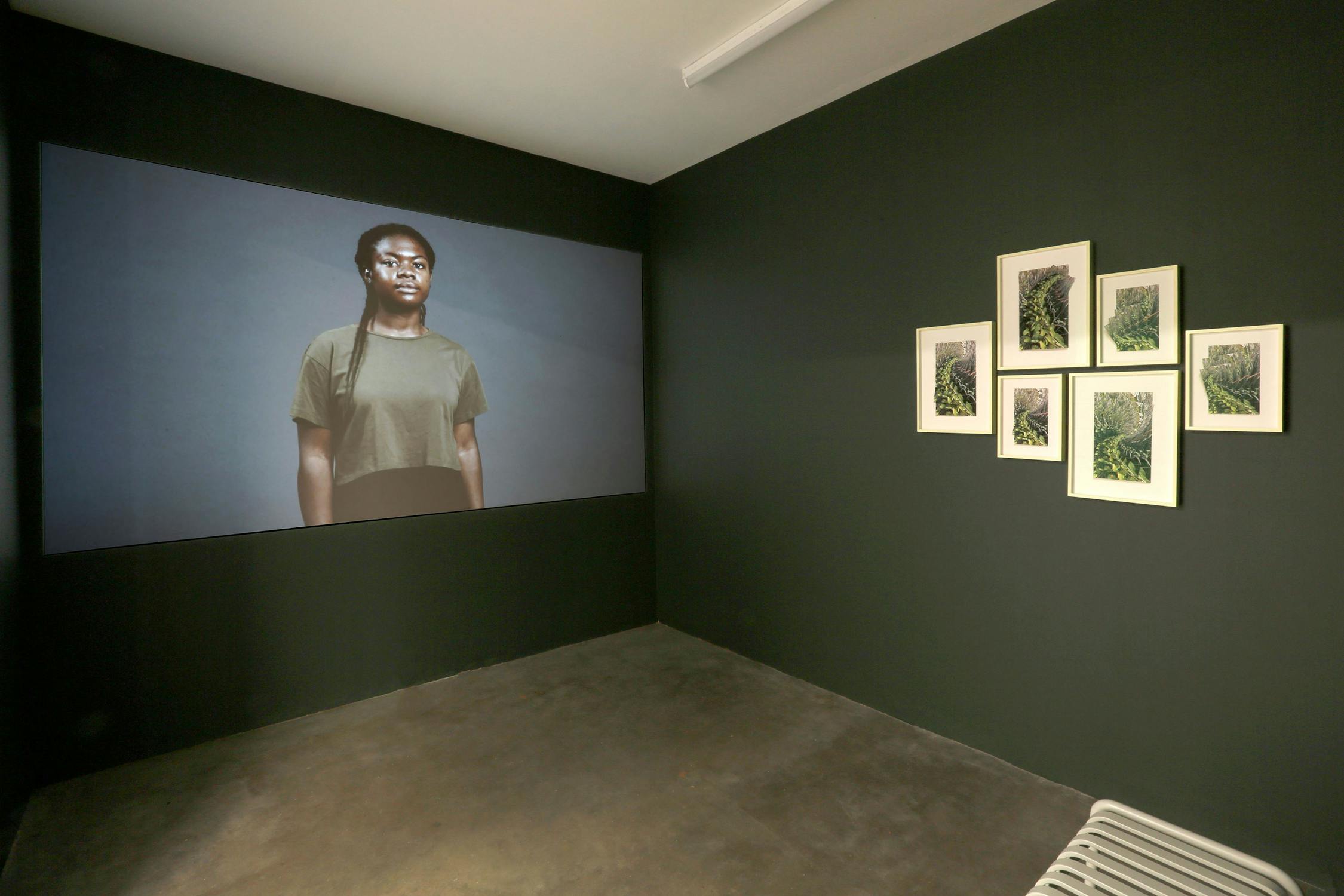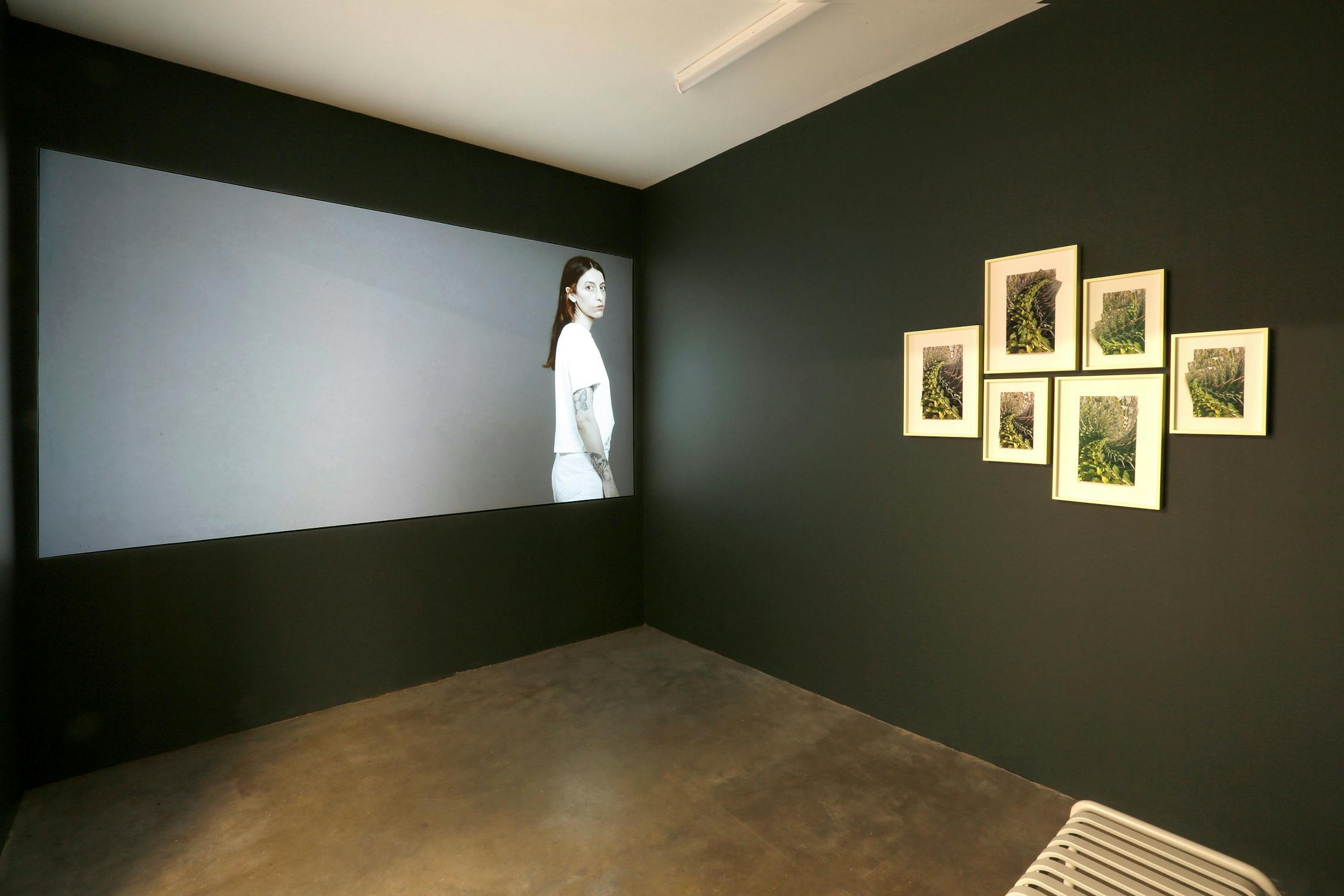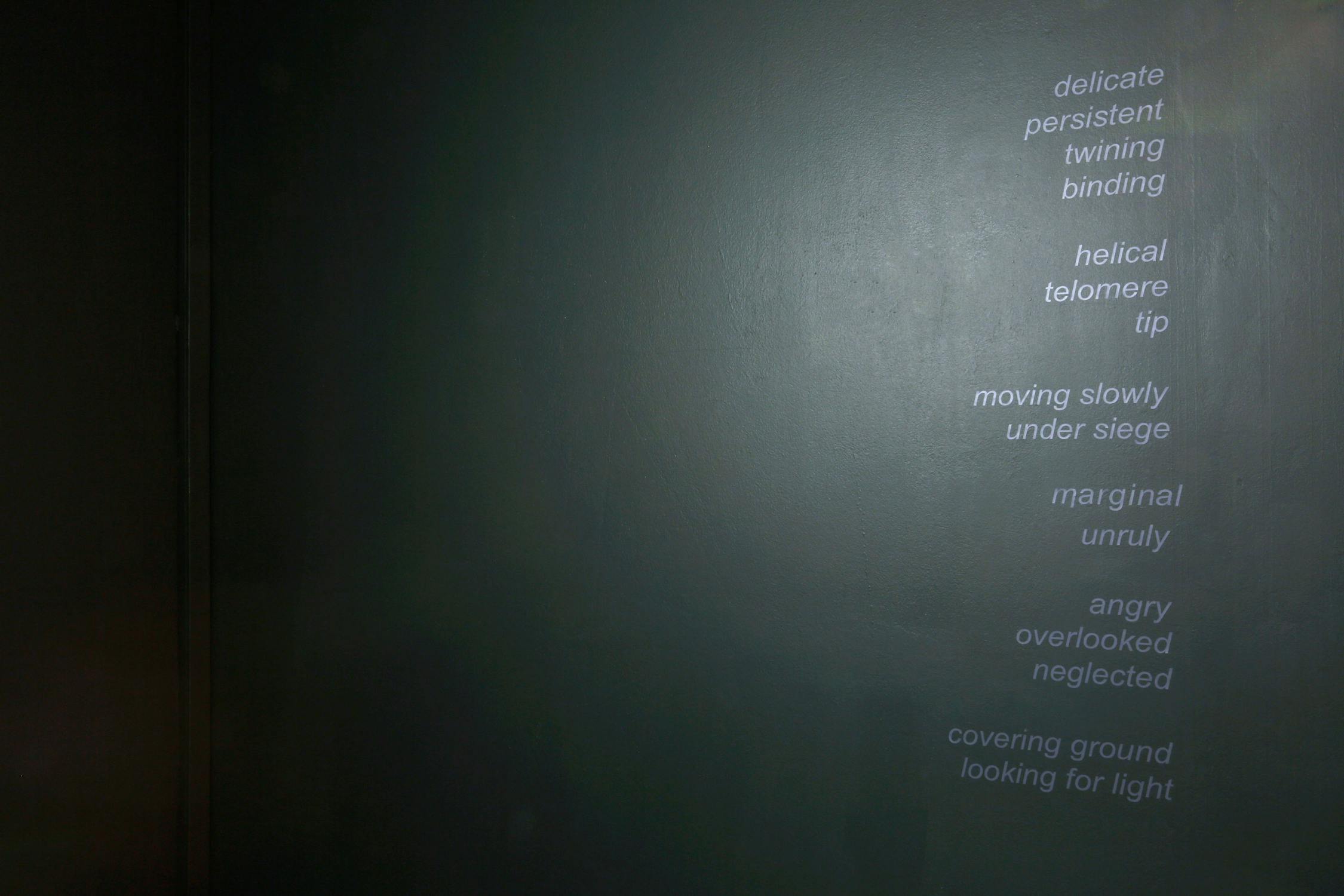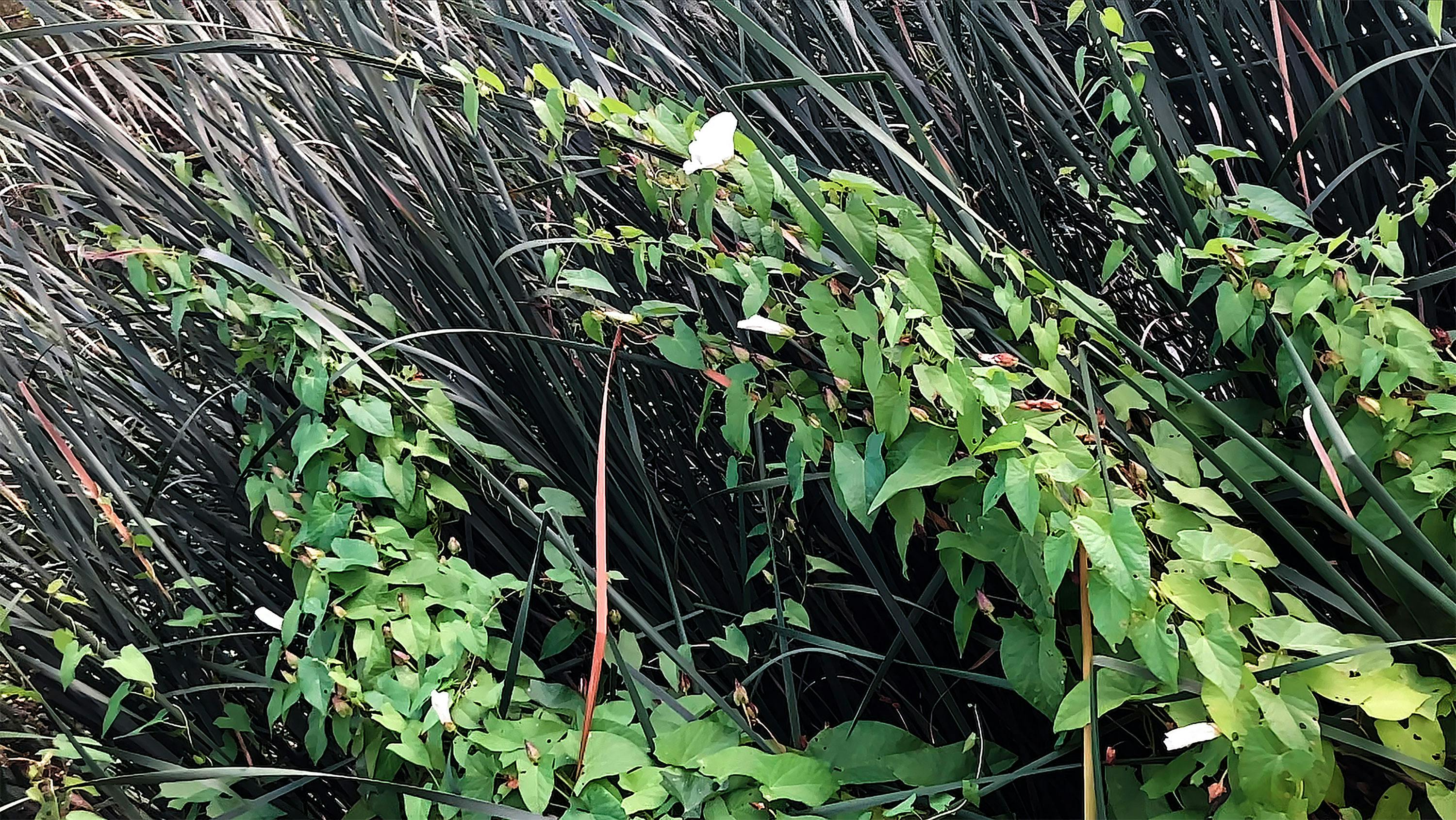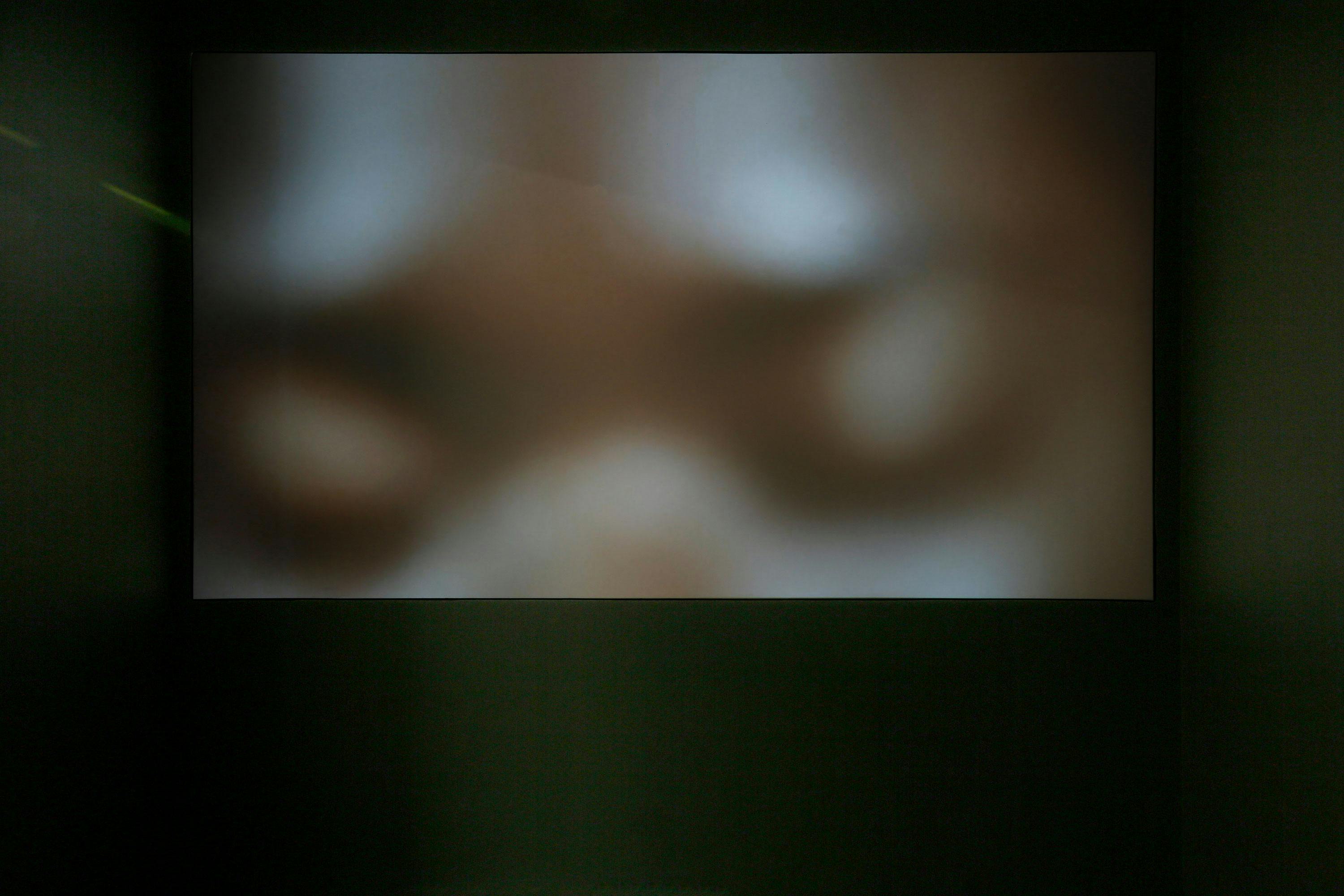Exhibition ALT TEXT / audio description
The boxlike exhibition space is painted in a dark colour – almost black but with a hint of green to it. It reflects very little light.
The gallery floor is concrete and there is a grey metal bench to sit on.
Hung on the wall opposite the open gallery entrance are six bindweed collages photographed on a white background, printed on a heavy matt paper and mounted in pale yellow box frames.
The crip collages are standard sizes: three are A3, three A4. The frames tessellate to create an irregular zig-zag shape, top and bottom. Each collage is different but made up of multiple prints of the same image, which give the impression of a plant tendril growing in a twining fashion towards the light. The edges of the prints curl slightly, leaving shadows in the collage that suggest movement and a sense of three-dimensionality.
On the wall to the left of the door is a projected moving image, which runs for 5 minutes 29 seconds before looping seamlessly again, and again. There is no audio. The video is 16:9 proportions. It is projected centrally and fills most of the width of the gallery wall. There is a separate ALT TEXT / audio description of this work.
As you turn away from the moving image and head to leave the gallery there is a vertical column of barely visible artist text in grey vinyl italic lettering on the wall to the left of the doorway. It reads:
delicate
persistent
twining
binding
helical
telomere
tip
moving slowly
under siege
marginal
unruly
angry
overlooked
neglected
covering ground
looking for light
Here, Now moving image ALT TEXT / audio description
This work features eight figures of various ethnicities and skin tones. Their ages range from 17-60. This moving image portrait runs for 5 minutes 29 seconds before looping seamlessly again and again. There is no audio.
A block of a brick pink colour fills the projection area, fading slowly into a blurry black twisting pattern. Blocks of colour – pink, mossy green and off-white – flash onto the wall before an in-focus image of hair braids appears, fading quickly back into the abstract pattern.
A close-up image of a young face with closed downcast eyes emerges but doesn’t gain focus. It fades into a blurred scene with a recumbent figure in a pale-yellow t-shirt and dark trousers. They are lying facing away from the viewer against a grey backdrop.
The pace of the video is slow: out of focus bodies lie or stand almost motionless, their backs to the viewer. Figures appear one after another – horizontal, then upright – the images overlapping each other, then fading away.
A cropped out-of-focus image of a pale face with closed eyes transitions into a landscape of pale green bindweed twining in long strands up the stems of tall grey reeds. The reeds fill the frame, swaying slowly in the breeze. The image in the crip collages is taken from this landscape.
The video motifs loop and repeat, each time slightly different – hair falling across the screen; closed eyes; upright figures juxtaposed with those lying down; blurred bodies coming in and out of focus, slowly twisting toward and away from the camera.
Rapid blocks of colour fill the projection area, intercut with shots of bindweed being buffeted in the wind and more figures wearing dark trousers and t-shirts of various cuts in olive, dark green, and maroon. The footage is presented at various speeds, the bodies twisting rapidly away from the camera again and again. One of the figures is dancing, her body merging with the landscape.
A figure lying semi-curled up slowly unfurls across the top of the screen. She is wearing a light green T-shirt and dark trousers. Her eyes come sharply into focus and look directly at the viewer, blurring and re-sharpening again before a rapid cut into a block of colour and a double coil of windswept bindweed.
One by one, the figures reappear and turn to look toward the viewer. The figure in pale yellow lies totally still, slowly opening their eyes to hold the viewer’s gaze. They have a snake tattoo on their lower arm.
The video cuts to an image of a hedge totally covered in bindweed in full bloom. Clusters of small white flowers pop from the screen, and fine tendrils wave gently in the breeze.
The video cuts back to a figure dressed in a white t-shirt and white jeans. She is standing on the far- right edge of the screen facing outwards. Tattoos of wildflowers and a butterfly are visible on her upper arm and wrist. Her eyes slowly open and turn into the empty grey frame. A single large white bindweed flower rapidly fades up onto the wall, then disappears.
The young figure appears again, slowly twisting toward the viewer. They hold our gaze with an open confidence. A moment later, the same action is repeated, but they are twisting away, cut through with the white flower still, blocks of colour and a flash of moving bindweed before the work loops back to a long solid block of pink light.
